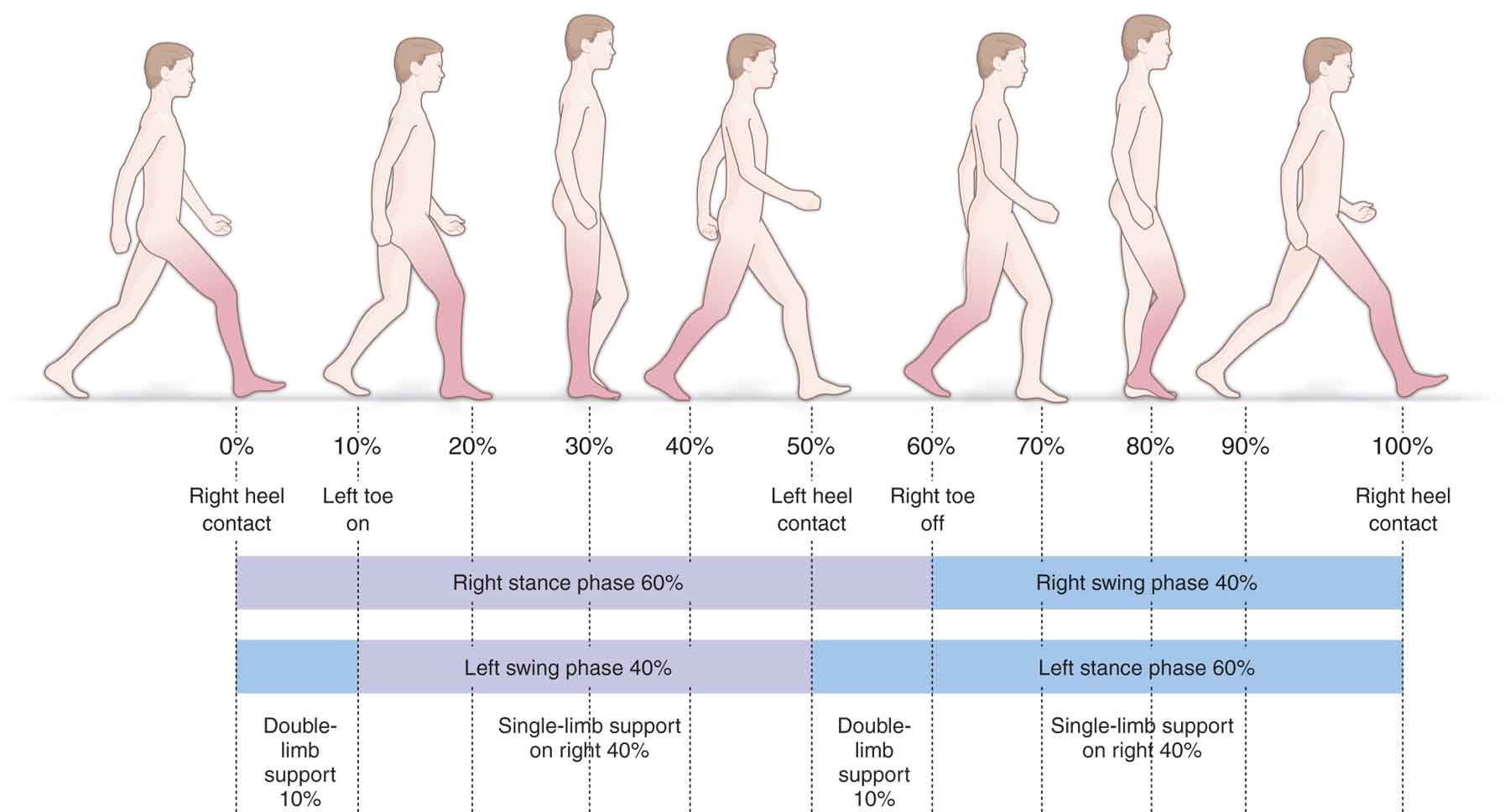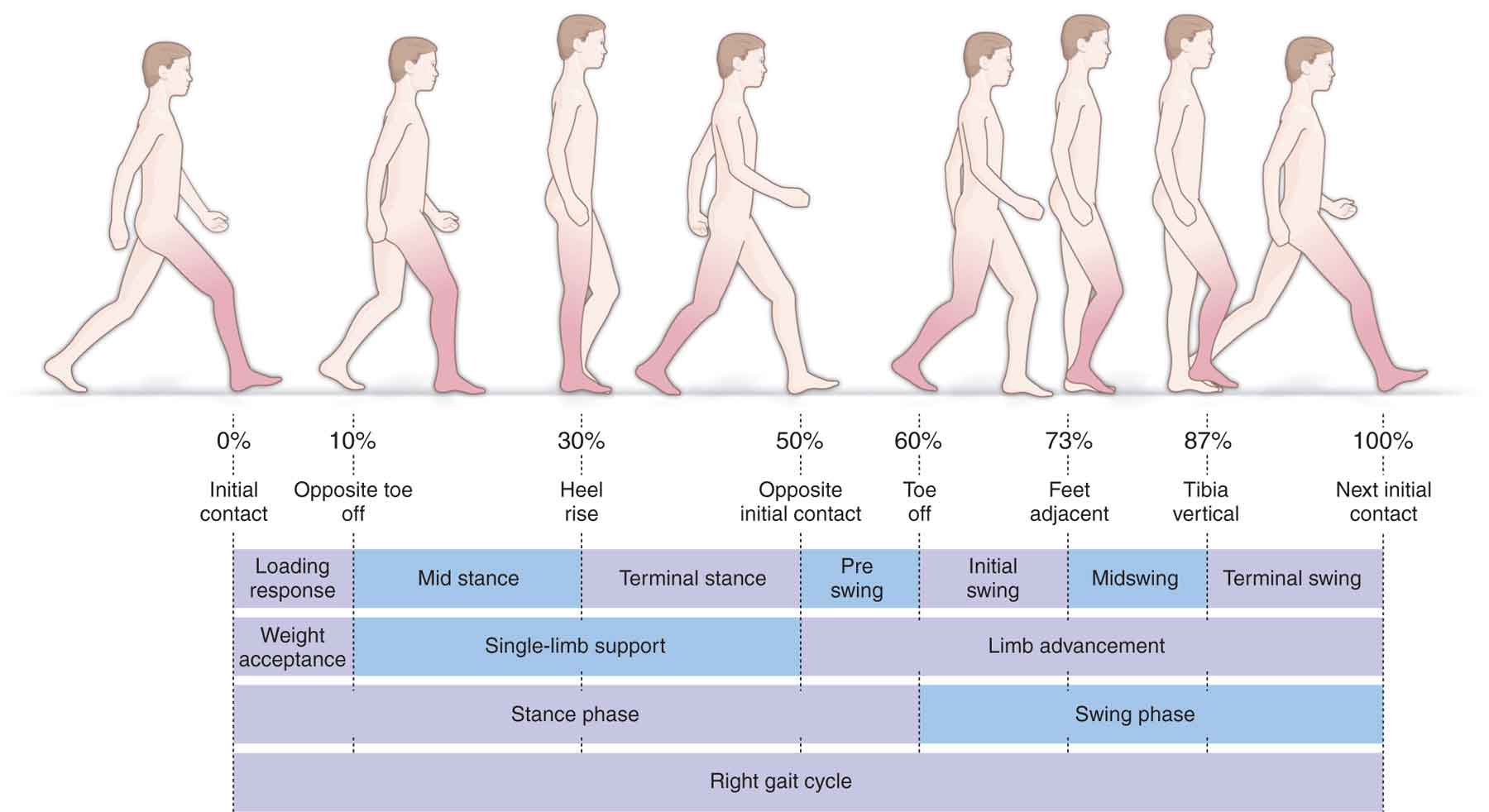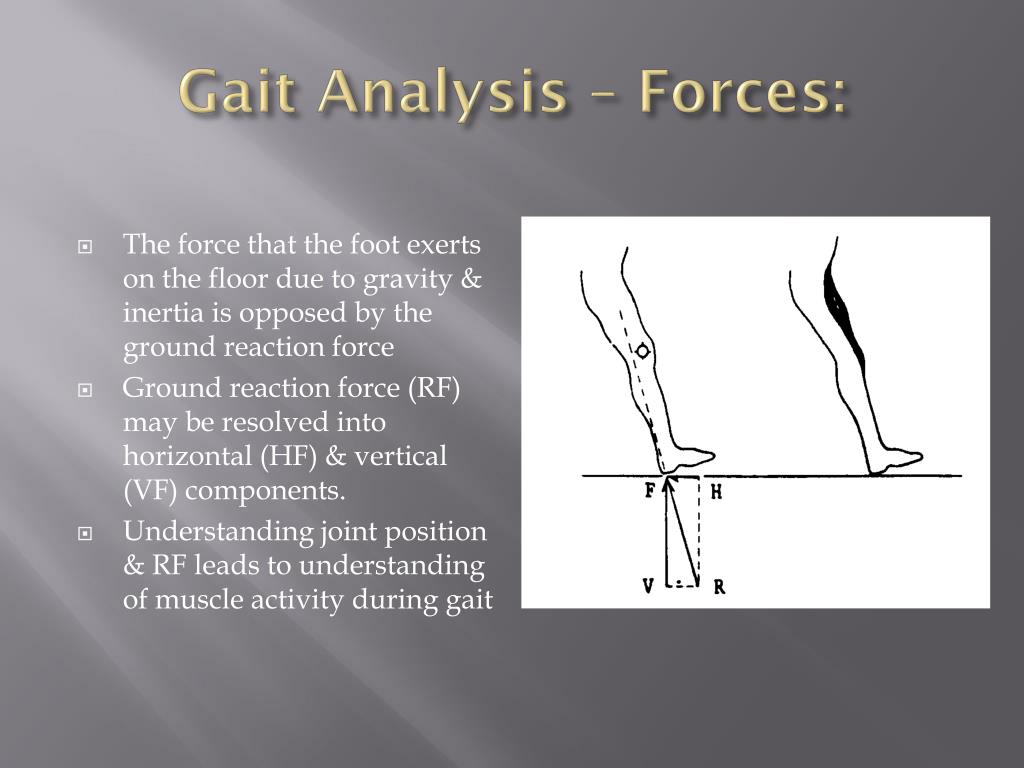Understanding the Concepts: Vertical and Horizontal Propulsive Forces
Propulsive forces during gait play a crucial role in human movement and locomotion. These forces can be categorized into two types: vertical and horizontal propulsive forces. Vertical propulsive forces primarily act in an upward direction, counteracting the force of gravity and aiding in the support of body weight during walking and running. In contrast, horizontal propulsive forces primarily act in a forward direction, contributing to the advancement of the body’s center of mass and influencing walking and running speed.
Understanding the intricacies of vertical and horizontal propulsive forces during gait is essential for various applications, including rehabilitation, athletic performance enhancement, and injury prevention strategies. By examining these forces and their interactions, researchers and practitioners can gain valuable insights into human movement patterns and develop targeted interventions to improve overall function and performance.
The Role of Vertical Propulsive Forces During Gait
Vertical propulsive forces are essential components of human gait, contributing significantly to the overall efficiency and stability of walking and running. These forces primarily counteract the effects of gravity, supporting body weight and facilitating the forward progression of the center of mass. By generating adequate vertical propulsive forces, individuals can maintain a smooth, efficient gait pattern, minimizing energy expenditure and reducing the risk of injury.
During the stance phase of gait, the foot makes contact with the ground, and the body’s center of mass is propelled upward and forward. Vertical propulsive forces are generated as the body’s muscles, particularly those in the lower extremities, contract and exert force against the ground. This force, in turn, pushes the body upward and assists in supporting body weight, reducing the overall load on the skeletal system.
In addition to their role in supporting body weight, vertical propulsive forces also contribute to the stability of human gait. By maintaining appropriate vertical forces, individuals can maintain balance and equilibrium, minimizing the risk of falls and injuries. Furthermore, a consistent and balanced vertical force distribution can help reduce joint stress and strain, promoting long-term joint health and function.
Understanding the role of vertical propulsive forces in gait is crucial for various clinical and sports applications. For instance, in rehabilitation settings, healthcare professionals can utilize this knowledge to develop targeted interventions aimed at improving gait efficiency, stability, and overall function in individuals with mobility impairments. Similarly, in sports contexts, coaches and trainers can apply this understanding to optimize athletic performance and reduce the risk of injury in athletes.
The Impact of Horizontal Propulsive Forces During Gait
Horizontal propulsive forces are crucial determinants of the forward progression and speed of human walking and running. These forces primarily act in the anterior-posterior direction, propelling the body’s center of mass forward and contributing to the overall momentum of gait.
During the stance phase of gait, horizontal propulsive forces are generated as the foot pushes off the ground, propelling the body forward. The magnitude and direction of these forces are influenced by various factors, including muscle activation patterns, joint angles, and ground reaction forces. By optimizing horizontal propulsive forces, individuals can enhance gait efficiency, reduce energy expenditure, and increase walking and running speed.
In addition to their role in forward progression, horizontal propulsive forces also contribute to the maintenance of balance and stability during gait. By generating appropriate anterior-posterior forces, individuals can counteract external perturbations and maintain a steady gait pattern, reducing the risk of falls and injuries.
Understanding the impact of horizontal propulsive forces on gait is essential for various clinical and sports applications. For instance, in rehabilitation settings, healthcare professionals can utilize this knowledge to develop targeted interventions aimed at improving gait efficiency, balance, and overall function in individuals with mobility impairments. Similarly, in sports contexts, coaches and trainers can apply this understanding to optimize athletic performance and reduce the risk of injury in athletes.
How to Measure and Analyze Vertical and Horizontal Propulsive Forces
Measuring and analyzing vertical and horizontal propulsive forces during gait is essential for understanding human movement patterns and developing targeted interventions to improve function, performance, and injury prevention strategies. Various methods and tools are available for assessing these forces, including force plates, motion capture systems, and wearable sensors.
Force Plates
Force plates are instruments that measure the ground reaction forces (GRFs) generated during gait. By placing force plates in the ground, researchers and clinicians can assess the vertical, horizontal, and shear forces exerted by the body as it interacts with the surface. Force plates provide detailed information on the magnitude, direction, and timing of GRFs, allowing for a comprehensive analysis of vertical and horizontal propulsive forces during gait.
Motion Capture Systems
Motion capture systems utilize multiple cameras and sensors to track the movement of markers placed on specific anatomical landmarks on the body. These systems can provide detailed information on joint angles, muscle activation patterns, and GRFs during gait, allowing researchers and clinicians to analyze the interplay between vertical and horizontal propulsive forces in human movement. Motion capture systems are particularly useful in research settings, as they can provide high-resolution data for detailed analysis and modeling.
Wearable Sensors
Wearable sensors, such as inertial measurement units (IMUs) and pressure-sensing insoles, offer a portable and cost-effective solution for measuring and analyzing vertical and horizontal propulsive forces during gait. These sensors can be worn during daily activities, providing real-world data on movement patterns and GRFs. Wearable sensors are particularly useful in clinical settings, as they can be used to assess gait function and develop targeted interventions in a natural environment.
Understanding the various methods and tools available for measuring and analyzing vertical and horizontal propulsive forces during gait is essential for researchers, clinicians, and practitioners working in the fields of human movement, rehabilitation, and sports performance. By utilizing these tools, professionals can gain valuable insights into human movement patterns and develop targeted interventions to improve function, performance, and injury prevention strategies.
The Interplay Between Vertical and Horizontal Propulsive Forces During Gait
Vertical and horizontal propulsive forces during gait are not independent entities but rather interconnected components of human movement. These forces interact and influence each other, contributing to the overall efficiency, stability, and forward progression of walking and running. Understanding the interplay between these forces is crucial for optimizing gait function, improving athletic performance, and preventing injuries.
During the stance phase of gait, vertical propulsive forces primarily act in an upward direction, counteracting the force of gravity and supporting body weight. Simultaneously, horizontal propulsive forces act in the anterior-posterior direction, propelling the body’s center of mass forward. The magnitude and timing of these forces are closely coordinated, ensuring a smooth and efficient gait pattern.
For instance, increased vertical propulsive forces can facilitate greater horizontal propulsion by elevating the body’s center of mass, allowing for more effective forward momentum. Conversely, optimized horizontal propulsive forces can enhance stability and balance during gait, reducing the demand on vertical forces and promoting energy efficiency.
In clinical and sports settings, understanding the interplay between vertical and horizontal propulsive forces can inform rehabilitation, training, and injury prevention strategies. For example, healthcare professionals can utilize this knowledge to develop targeted interventions aimed at improving gait efficiency, balance, and overall function in individuals with mobility impairments. Similarly, coaches and trainers can apply this understanding to optimize athletic performance and reduce the risk of injury in athletes.
In summary, the interplay between vertical and horizontal propulsive forces during gait is a complex and dynamic process that significantly influences human movement and locomotion. By examining the intricate relationship between these forces, researchers, clinicians, and practitioners can gain valuable insights into gait function and develop targeted interventions to improve overall function, performance, and injury prevention strategies.
Implications for Clinical and Sports Applications
Understanding vertical and horizontal propulsive forces during gait offers numerous practical implications for clinical and sports applications. By examining these forces and their interactions, researchers, clinicians, and practitioners can develop targeted interventions aimed at improving gait efficiency, balance, stability, athletic performance, and injury prevention strategies.
Clinical Applications
In clinical settings, healthcare professionals can utilize this knowledge to assess and address gait impairments in individuals with neurological, orthopedic, or chronic conditions. For instance, understanding the relationship between vertical and horizontal propulsive forces can inform the development of rehabilitation programs aimed at improving gait function, balance, and overall mobility in patients with stroke, Parkinson’s disease, or osteoarthritis.
Sports Applications
In sports contexts, coaches and trainers can apply this understanding to optimize athletic performance and reduce the risk of injury in athletes. For example, analyzing vertical and horizontal propulsive forces during running or jumping activities can provide valuable insights into an athlete’s movement patterns, enabling the identification of potential inefficiencies or imbalances that may contribute to suboptimal performance or increased injury risk. Based on these insights, targeted interventions, such as strength and conditioning programs, gait retraining, or technique modifications, can be implemented to enhance performance and prevent injuries.
In summary, understanding vertical and horizontal propulsive forces during gait has significant implications for clinical and sports applications. By examining these forces and their interactions, researchers, clinicians, and practitioners can develop targeted interventions aimed at improving gait efficiency, balance, stability, athletic performance, and injury prevention strategies, ultimately enhancing overall function and well-being in various populations.
Current Research and Future Directions
The study of vertical and horizontal propulsive forces during gait has gained significant attention in recent years, with researchers exploring various aspects of these forces and their interactions. This growing body of research has led to a better understanding of human movement and locomotion, as well as the development of innovative interventions and technologies to improve gait function, athletic performance, and injury prevention strategies.
Latest Research Findings
Recent studies have investigated the role of vertical and horizontal propulsive forces in various populations, including individuals with neurological or orthopedic conditions, older adults, and athletes. For instance, research has shown that altered vertical and horizontal propulsive forces are associated with increased fall risk in older adults and decreased athletic performance in athletes. Additionally, interventions targeting these forces, such as gait retraining or strength and conditioning programs, have demonstrated promising results in improving gait function and reducing injury risk.
Future Directions and Applications
As the field of gait analysis continues to evolve, several future directions and applications for the study of vertical and horizontal propulsive forces can be anticipated. These include:
- Development of more sophisticated and user-friendly measurement tools, such as wearable sensors and smart devices, to facilitate the assessment of vertical and horizontal propulsive forces in real-world settings.
- Integration of gait analysis into telehealth and remote monitoring platforms, enabling healthcare professionals to assess and manage gait impairments in patients with limited access to clinical facilities.
- Investigation of the role of vertical and horizontal propulsive forces in the context of virtual reality and augmented reality technologies, with potential applications in rehabilitation, training, and performance enhancement.
In conclusion, the study of vertical and horizontal propulsive forces during gait has made significant strides in recent years, with promising research findings and innovative applications. As this field continues to grow, researchers, clinicians, and practitioners can look forward to new opportunities to enhance gait function, athletic performance, and injury prevention strategies, ultimately improving overall health and well-being in various populations.
Conclusion: The Importance of Vertical and Horizontal Propulsive Forces in Gait
Understanding the concepts of vertical and horizontal propulsive forces during gait is crucial for researchers, clinicians, and practitioners working in various fields related to human movement and locomotion. By examining these forces and their interactions, professionals can gain valuable insights into gait function, efficiency, and stability, ultimately informing the development of targeted interventions aimed at improving overall gait performance and reducing injury risk.
Vertical propulsive forces play a significant role in supporting body weight and maintaining stability during gait, while horizontal propulsive forces contribute to forward progression and speed. The interplay between these forces is complex and dynamic, with each force influencing the other in various ways. By recognizing and analyzing these forces, researchers and practitioners can identify potential inefficiencies or imbalances that may impact gait function, athletic performance, or injury risk.
The latest research findings and trends in the study of vertical and horizontal propulsive forces during gait have led to the development of innovative measurement tools, technologies, and interventions. As this field continues to evolve, professionals can look forward to new opportunities to enhance gait function, athletic performance, and injury prevention strategies, ultimately improving overall health and well-being in various populations.
In conclusion, the importance of vertical and horizontal propulsive forces in gait cannot be overstated. By encouraging readers to consider the practical implications of this knowledge in their own fields of interest, we hope to inspire further exploration and application of these concepts in the pursuit of optimal human movement and locomotion.






